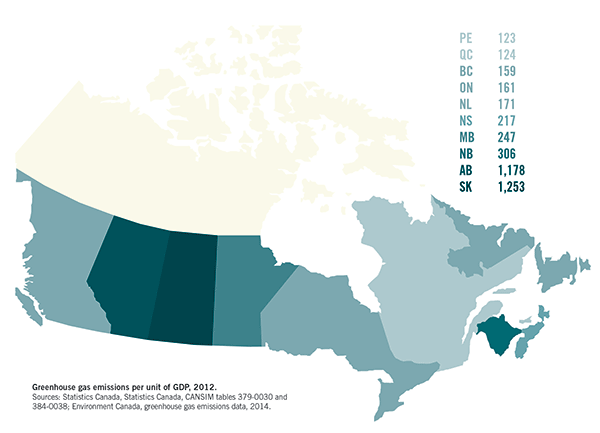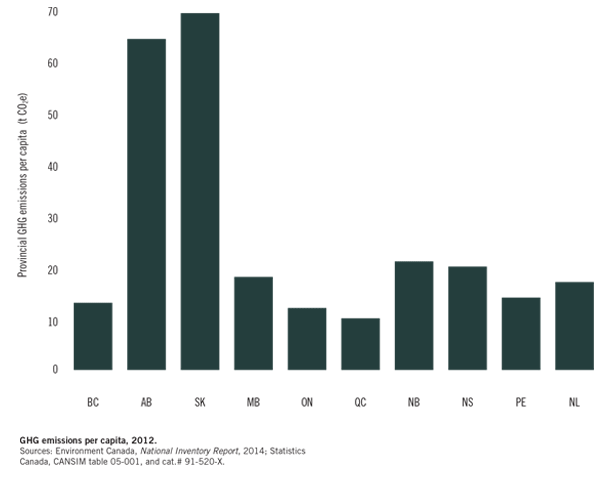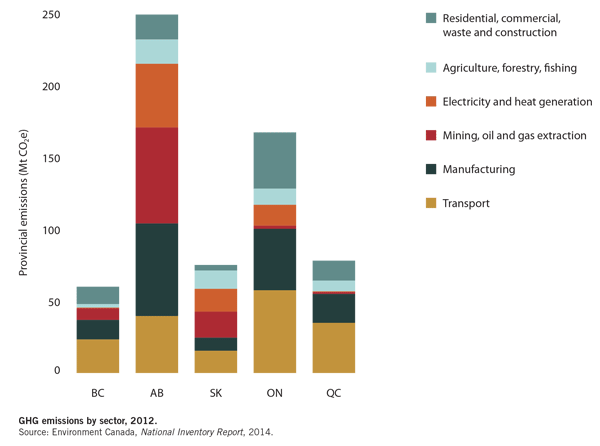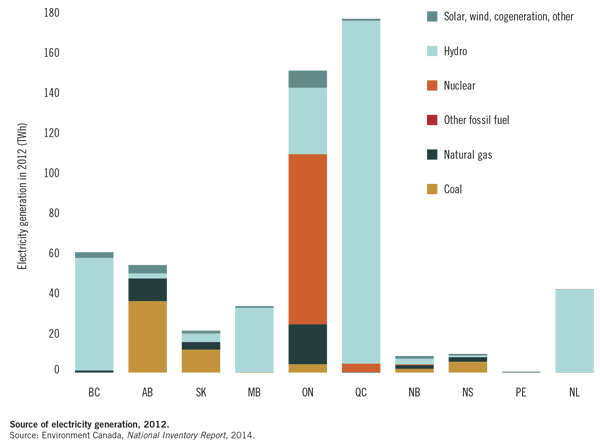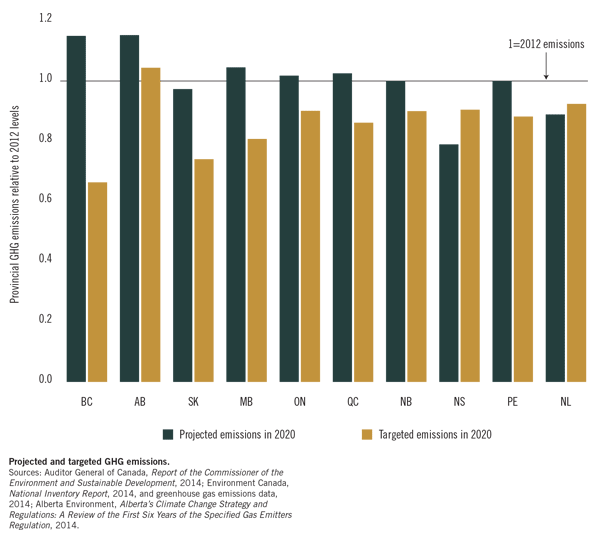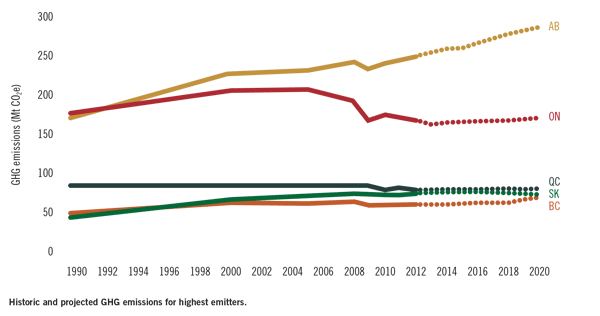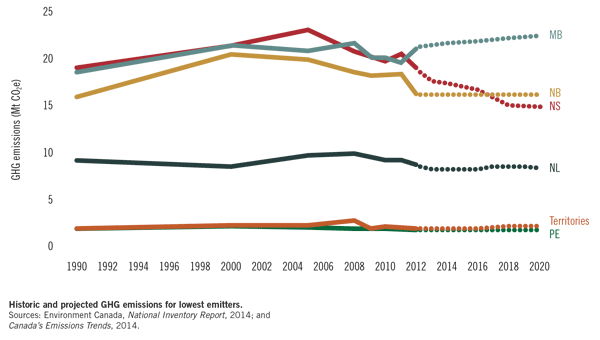
On April 13, 2015, the government of Ontario announced its commitment to joining Quebec and California in a cap-and-trade system under the Western Climate Initiative (WCI). Ontario is not at the front of the pack when it comes to pricing carbon, nor when it comes to choosing the specific approach of cap-and-trade. However, this does not diminish Ontario’s significant opportunity for leadership — quite the opposite. The province can leverage the tremendous advantage of learning from other jurisdictions’ systems — their strengths and weaknesses — to design a best-in-class policy straight out of the gate.
This article identifies four key cap-and-trade design principles as a guide for Ontario — or any province — in moving policy forward. While offered as a road map to provincial decision-makers, these recommendations can provide insight to all stakeholders — business, industry and everyday Ontarians — on what to expect and how to hold government accountable for implementing the most effective, fair and cost-effective system.
Carbon pricing, whether achieved through a tax or a cap-and-trade system, is an increasingly common policy being introduced by nations and regions across the world. Globally, the jurisdictions currently pricing carbon account for nearly a quarter of the world’s greenhouse gas (GHG) emissions.
Cap-and-trade systems, in particular, are a burgeoning force in world markets. In January 2015, the new South Korean cap-and-trade system became the second largest in the world, behind the European Union’s, which has been in place since 2005. China is currently running pilot markets in seven jurisdictions with the aim of launching a national cap-and-trade system in 2016. In 2008, nine US states joined together under the Regional Greenhouse Gas Initiative to create a market that caps emissions from the power sector. And in a few short months, when Ontario formally joins the WCI, three-quarters of Canadians will live in a province that prices carbon.
All of this can be considered meaningful progress toward establishing a broad, global price on carbon, a goal with a growing number of powerful advocates including the International Monetary Fund and the World Bank as well as major corporations and institutional investors across the world. Most recently, six of Europe’s top oil and gas firms publicly called for national political commitments to pricing carbon.
Committing to a carbon pricing regime is one thing. Designing an effective, durable and economically sound policy is quite another. While it is possible to debate the inherent strengths or weaknesses of cap-and-trade systems versus a carbon tax, the fact is these instruments are more similar than they are different. Both can be effective at generating low-cost emissions reductions if they are designed well. And both instruments are vulnerable to poor design choices that could undermine their effectiveness as well as their credibility.
In June 2015, Canada’s Ecofiscal Commission released The Way Forward for Ontario, outlining key principles and recommendations addressing four major policy considerations: stringency, coverage, the distribution of allowances and linkage with other systems. A common theme runs through these principles: good governance and transparency. It is not enough to design a policy that is effective, cost-effective and fair. It must also be clear, predictable and immune to political interference. The confidence of Ontarians — everyday consumers and big emitters alike — is critical to the success of the province’s new policy.
Principle 1: On stringency. Stringency of policy should rise gradually and predictably over time in order to drive meaningful emissions reductions. A cap-and-trade system imposes a quantity constraint (the cap), limiting the total allowable levels of GHG emissions in a given compliance period. The cap reflects the total number of tradable emissions allowances (also known as permits) created by the policy. To comply with policy, emitters require a permit for each tonne of emissions. Critically, the cap declines over time, with deeper reductions required in subsequent compliance periods.
A lower cap represents a more stringent policy because it requires more action by emitters overall. Yet because the allowances are tradable, different emitters will generally reduce their emissions by different amounts. A carbon price emerges from the market created by these trades and the scarcity created by the cap. Not surprisingly, a lower cap generally leads to a higher carbon price. So the two key metrics to compare the stringency of different cap-and-trade systems — (1) the strictness of the quantity constraint and (2) the carbon price — are really just two sides of the same coin.
For Ontario’s cap-and-trade system to be effective, the total quantity of permits allocated must be equal to the provincial cap. This is not always simple, and errors can undermine the confidence in the system. In the European Union’s Emissions Trading System, for example, too many permits were allocated during the pilot phase (2005-07), partly due to limitations in emissions data, which led to a collapse in price.
This highlights another concern that policy-makers should account for: price volatility. A persistently low carbon price provides inadequate incentives for innovation and long-term investments in low-carbon technologies. In contrast, large and sudden spikes in the price could threaten business competitiveness and be detrimental to the economy. The aim should be to steadily increase the stringency of policy over time by tightening the cap gradually, but to avoid large and sudden swings in the price. This will avoid unnecessary shocks to the economy, but will nonetheless encourage households and businesses to change their behaviour as the price of carbon rises.
The volatility of the price can be managed by various mechanisms, including the establishment of a “price collar” that includes both a ceiling (an upper limit on the cost of allowances) and a floor (a minimum carbon price, which under the WCI is currently about $15 per tonne).
Finally, incentives under a cap-and-trade system work only if regulated entities have no motivation to cheat. The regulating authority must have the power to impose and enforce sufficient penalties on emissions sources that do not comply with the program rules. Under the WCI, for example, entities must surrender four allowances or offsets for each missing allowance.
Principle 2: On coverage. Make coverage of policy as broad as practically possible while maintaining the integrity of the system. The coverage of Ontario’s new capand-trade system (i.e., those emissions subject to the cap) will be a key determinant of its success or failure. Coverage defines the emissions subject to the cap and thus to the carbon price. Broad coverage creates incentives for emissions reductions throughout the economy. Coverage also matters for minimizing the costs of any given level of emissions reduction. The more emitters (and emissions) are covered by the policy, the more incentives exist to realize all available low-cost reductions.
The point of regulation — which defines who must comply with the emissions cap — is a key determinant of coverage. A downstream cap — applied at the end of the life cycle for fuels — limits the emissions actually produced by regulated emitters. An upstream cap applies to fuel distributors, based on the carbon content of the fuel they sell.
The Quebec and California systems actually use a combination of upstream and downstream approaches. Fuel use for small emitters is covered via an upstream cap on fuel distributors, while large emitters have their emissions capped directly. The result is an approach with broad coverage — around 85 percent of provincial emissions in Quebec — but relatively modest administrative fees.
In addition to the point of regulation, decision-makers must also determine which entities will be subject to the policy (or, more importantly, if there will be entities not subject to it). There will always be arguments for excluding a firm, industry or region from a cap-and-trade system. However, exemptions significantly reduce the cost-effectiveness of the policy. Achieving the same level of emissions reduction under a system with narrower coverage means that costs of compliance will be borne by a smaller number of emitters.
Exemptions also undermine the credibility of a system by reducing fairness. Without all emitters facing the same price, political rivalries, jealousies and competition will undermine political support for the regime. Further, once one exemption is granted, denying others becomes more challenging for government to justify.
Finally, there is the question of offsets, which can broaden the coverage of a cap-and-trade system to include emissions reductions that are hard to incorporate directly under the cap. This could include changes in agricultural practices, forestry or land use. However, if these emissions reductions would have happened anyway, even in the absence of the offset payment, then the effectiveness of the policy is undermined. So offsets, while desirable in principle, need to be used carefully.
Principle 3: On the distribution of allowances. Aim to auction all allowances. The scope for free allocations should be narrow, rules-based, and transitional. A cap-and-trade system creates a market for emissions allowances and thereby creates a price for those same permits. As a result, emissions allowances have economic value. Authorities must decide whether to give that value to firms in regulated industries, through free allocation of permits, or to sell permits through transparent and competitive auctions.
While the nature of permit allocation does not impact the effectiveness of the policy, it does have implications for both the cost-effectiveness and the fairness of the policy. For example, if emitters can pass carbon costs on to consumers (with higher prices), then free allowances can lead to windfall profits for those emitters—undermining public confidence. Further, giving permits away for free sacrifices a significant revenue stream that could be used by government to create further economic benefits. A rough estimate of carbon revenue for Ontario (assuming that 70 percent of allowances are auctioned) is $1.5 billion in 2016, rising to $3 billion in 2020. How these revenues are recycled has important implications for the net cost of the program to individual stakeholders and to the province as a whole.
Arguments for free allowances are usually rooted in competitiveness concerns. The cost of purchasing allowances could leave emissions-intensive and trade-exposed firms competitively disadvantaged in international markets. However, like exemptions, free allocations can be divisive, because they provide economic value to specific emitters. Decisions about how free permits should be allocated would likely be subject to intense lobbying, which could undermine confidence in the effectiveness of the cap-and-trade system. As a result, transparent allocation of free permits requires clear criteria to determine how many allowances should be given, and to whom.
Given the concerns related to the free allocation of permits, any such provision should meet three criteria:
- It should be narrow, applying only to the most emissions-intensive and trade-exposed sectors.
- It should be rules-based. Data, not discretion, should be used to identify vulnerable sectors.
- It should be transitional, providing additional incentives for emissions-intensive and trade-exposed firms to adjust, and thus become able to compete internationally under carbon constraints.
Principle 4: On linkage. Seek out opportunities for linkage. Ontario’s cap-and-trade system should be designed from the outset to facilitate straightforward linkage with other cap-and-trade systems. In fact, it is on track to do exactly this with a stated intent to cooperate with Quebec and California. In joining the existing WCI system there are certain decisions that Ontario will not make independently. They include, for example, harmonization on price ceilings and floors, how best to monitor and report emissions reductions, and enforcement measures.
Linkage creates numerous benefits for jurisdictions implementing cap-and-trade systems. First, it increases the overall cost-effectiveness of the policy by broadening the coverage of the cap across multiple jurisdictions, allowing for more low-cost emissions reductions. Second, it increases market liquidity by establishing a larger permit-trading space, allowing larger and more frequent trades to take place within a common system. Third, it can help to reinforce an emerging framework for harmonized carbon pricing across multiple jurisdictions.
It is no small thing for Canada’s largest province to add its weight to the Western Climate Initiative. Through this harmonization there is a substantial opportunity to reinforce cross-jurisdictional and international carbon pricing. As Dominic Barton, global managing director of McKinsey & Company, explains, “There is a huge opportunity for Ontario, Quebec and California to establish a best-practice template that could accelerate the linking of different carbon markets together, supporting the transition to a low-carbon economy.”
As a substantial new member of that system, Ontario can and should demonstrate leadership by designing a best-in-class cap-and-trade policy and then play an active role in bringing others into the fold. This is a chance to make huge strides on the path to broad, harmonized carbon pricing — demonstrating what is possible at a moment when the world is ready for solutions.
The geography of GHG emissions
Going to the source
Past, present and… future?
Photo: Anne Tremblay / Shutterstock
Do you have something to say about the article you just read? Be part of the Policy Options discussion, and send in your own submission. Here is a link on how to do it. | Souhaitez-vous réagir à cet article ? Joignez-vous aux débats d’Options politiques et soumettez-nous votre texte en suivant ces directives.





